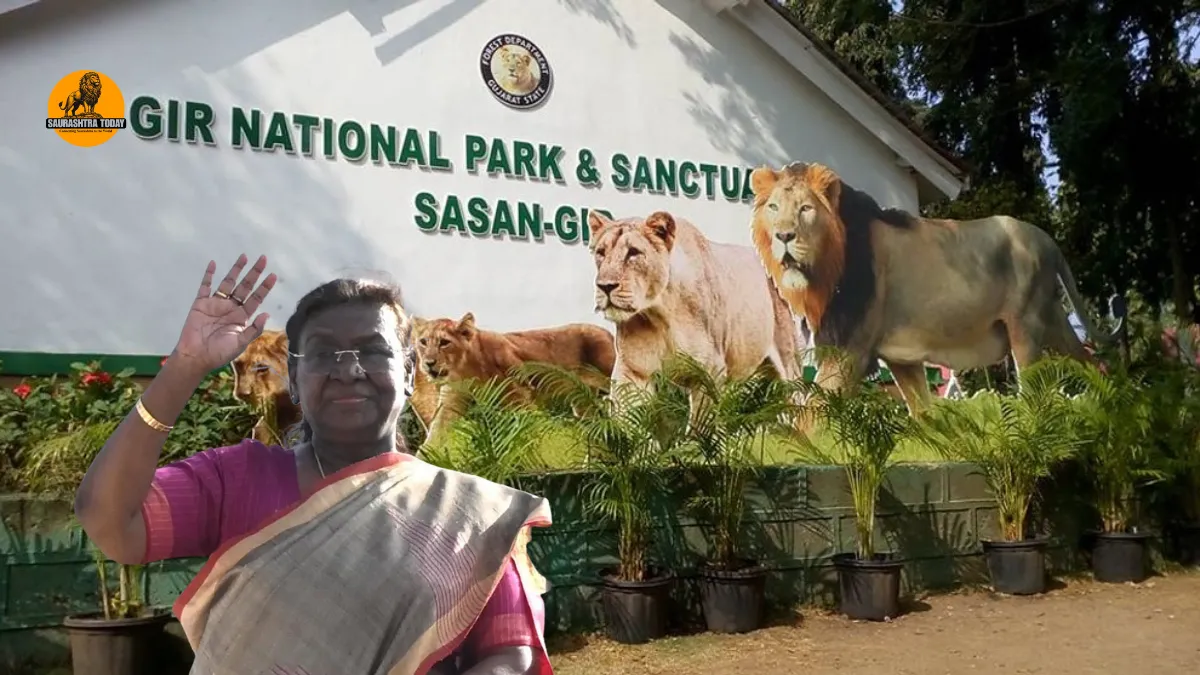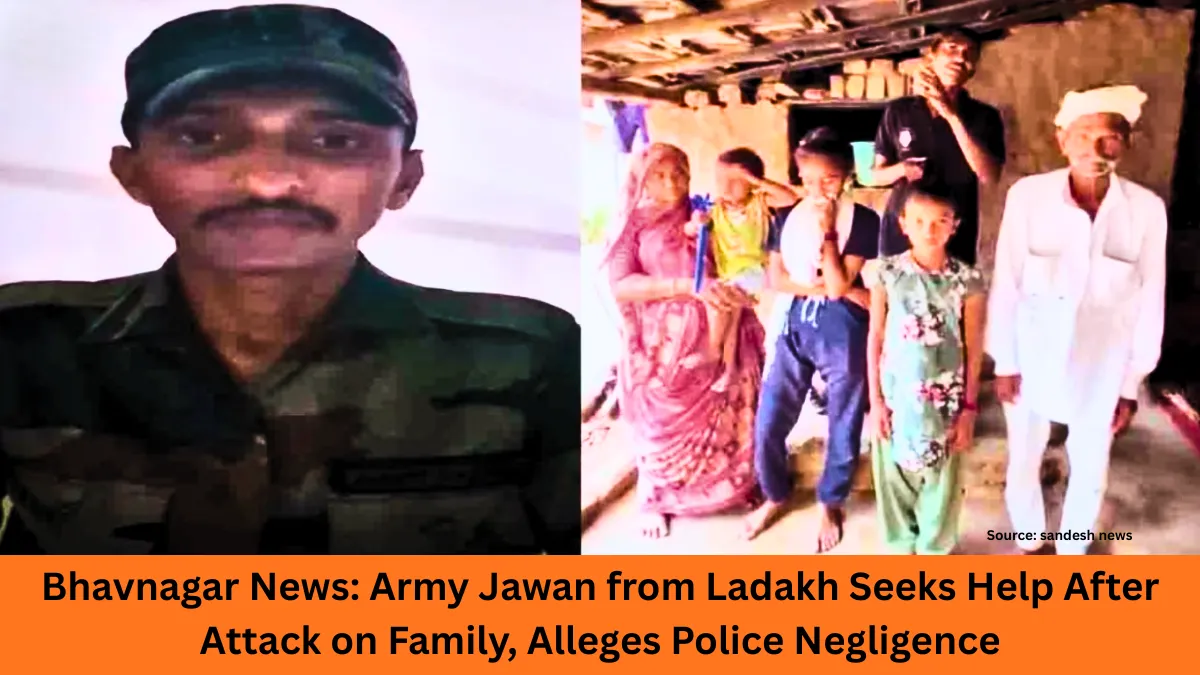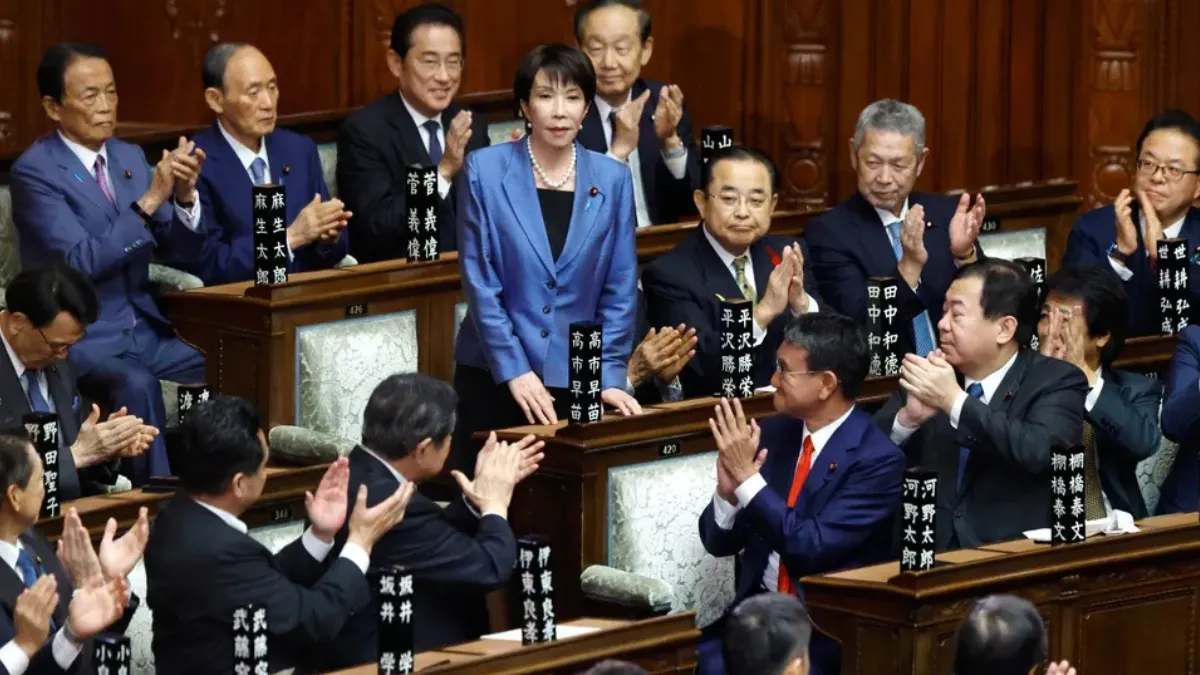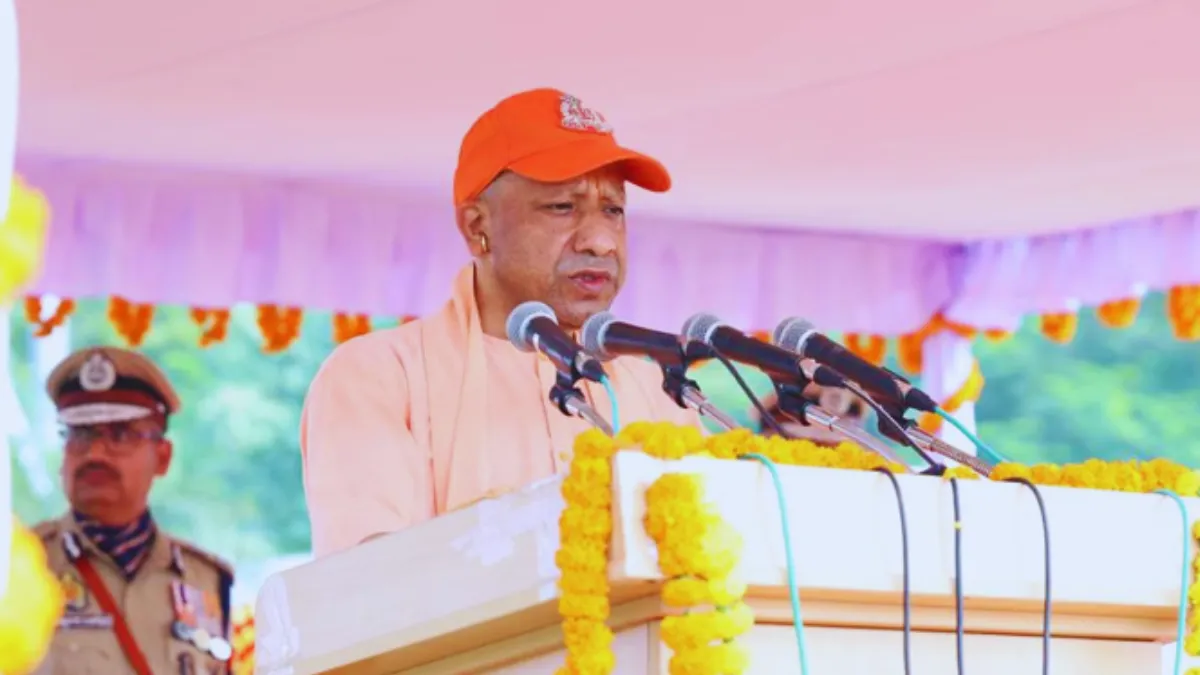Gujarat, India – October 2025: President Draupadi Murmu has arrived in Sasan Gir, marking a significant moment in her three-day visit to Gujarat. This visit highlights her commitment to wildlife conservation and engagement with local tribal communities residing within Gir National Park.
First Stop: Somnath Mahadev Temple
On the second day of her Gujarat tour, President Draupadi Murmu began her morning with a visit to the revered Somnath Mahadev Temple, one of the twelve Jyotirlingas in India. Accompanied by her daughter, Itishree Murmu, the President received a warm welcome from local dignitaries including Tourism Minister Mulubhai Bera, Member of Parliament Rajesh Chudasama, Collector N.V. Upadhyay, and Superintendent of Police Jaydip Singh Jadeja at Triveni Helipad. The ceremony included traditional flower garlands and heartfelt greetings.
The visit to Somnath not only reflects the spiritual aspect of her tour but also emphasizes the President’s connection with cultural and religious heritage across India.
Arrival at Sasan Gir: A Wildlife and Conservation Hub
Following her visit to Somnath, President Draupadi Murmu reached Sasan Gir, the famed home of the Asiatic lion. She arrived at the Lion House, a guest facility under the Forest Department known for hosting VIPs and dignitaries. Here, the President is scheduled to stay overnight and experience the rich biodiversity of Gir National Park.
During her stay, President Murmu will explore the Gir Safari Park, witnessing Asiatic lions in their natural habitat. The visit is expected to offer insights into the ecological significance of Gir and the ongoing efforts to preserve the species while balancing human-wildlife coexistence.
Also read: President Draupadi Murmu Visits Gujarat: Prays at Somnath Temple, to Meet Tribal Communities in Gir
Engagement with Local Maldhari Community
A significant part of President Draupadi Murmu’s visit is interaction with the Maldhari tribal community, who have lived within the forests of Gir for centuries. The Maldharis have a unique coexistence with wildlife and play an important role in conservation efforts.
During her interaction, the President will learn about the community’s lifestyle, traditional practices, and the challenges they face in protecting wildlife. Such engagements reinforce the importance of involving local communities in conservation and provide recognition for their invaluable contributions.
Security and Administrative Preparations
The Gujarat government has strengthened security measures in Junagadh and Gir-Somnath districts in anticipation of the President’s visit. Her itinerary includes careful planning to ensure safety while enabling meaningful interaction with both wildlife and local communities.
President Draupadi Murmu’s overnight stay at Sasan Gir demonstrates the blend of ecological awareness and cultural diplomacy central to her visit. Tomorrow, she will continue her journey to Dwarka, further exploring the cultural heritage of Gujarat.
Significance of the Visit
President Draupadi Murmu’s visit to Sasan Gir highlights several important aspects:
- Wildlife Conservation: Observing Asiatic lions and understanding ongoing preservation efforts.
- Tribal Welfare: Recognizing the role of Maldhari communities in sustainable forest management.
- Cultural Diplomacy: Beginning the day with a spiritual visit to Somnath Mahadev Temple strengthens ties with India’s rich heritage.
- Environmental Awareness: Promoting eco-tourism and biodiversity in Gujarat.
This visit underlines the President’s commitment to bridging the gap between tradition, wildlife conservation, and development, while respecting local communities.
Also read: President Murmu to Visit Gir National Park: Safari Opens Early for Historic Occasion
Conclusion:
President Draupadi Murmu’s Gujarat tour demonstrates a holistic approach combining cultural heritage, ecological responsibility, and community engagement. Her interactions with both the Maldhari tribes and the majestic Asiatic lions of Gir send a strong message about sustainable development and conservation as central to India’s future.

















